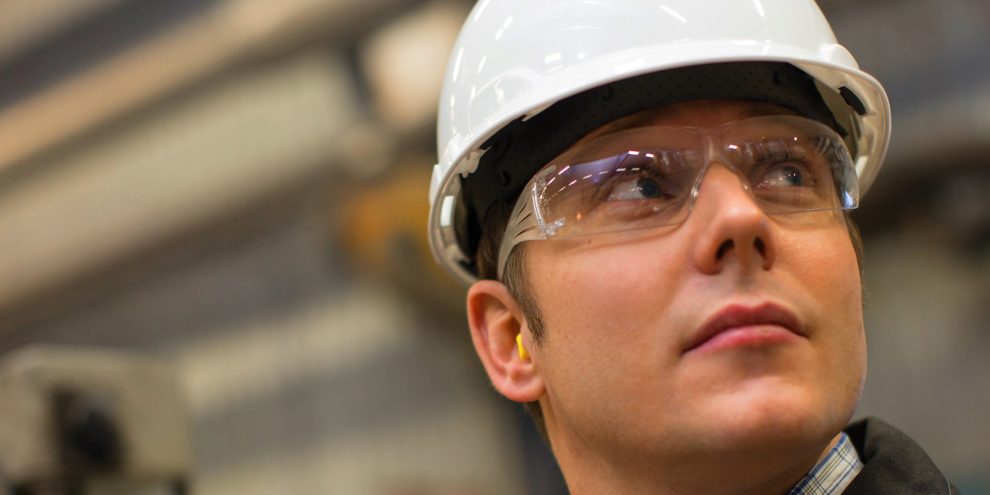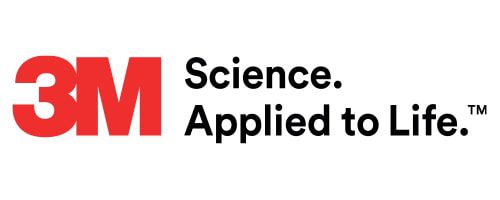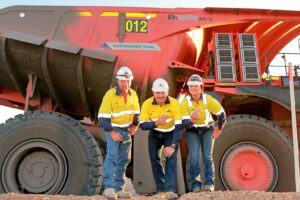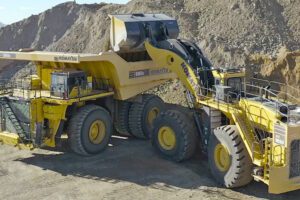Workplace safety is more than just hard hats and steel capped boots. Work-related eye injuries do not typically cause fatalities and are not something we hear about reported in the news, however, they are common and can be quite catastrophic.
Depending on the nature of the injury, eye damage can be problematic to treat. Permanent vision loss, partial blindness, or complete loss of sight are severe consequences that can affect you for the rest of your life…imagine life without the power of sight and the significant impact to your quality of life, not to mention the effect on loved ones, family and friends.
What contributes to eye injuries at work?
Every day, worldwide, workers suffer from eye injuries simply because they do not wear protective eyewear, or do not wear the appropriate type:
- Not wearing eye protection – nearly three out of every five workers injured are not wearing eye protection at the time of the accident.
- Wearing the wrong kind of eye protection for the job – wearing the wrong kind of safety eyewear can be just as hazardous as not wearing any protection at all.
“Preventing injuries requires every employee to consistently wear the appropriate eyewear protection, at all times…”
What causes eye injuries?
Even very small particles, even those smaller than a pinhead can still cause devastating damage, the most common causes of eye injuries at work include:
- Projectiles – a large proportion of accidents are caused by flying or falling objects, sparks, metal, sawdust and other particles
- Chemical splashes
- Radiation
- Sun and wind
- Protruding objects – pipes and wires sticking out of walls or hanging from ceilings
- Unsafe handling of tools
Where do accidents occur most often?
Potential eye hazards can be found in nearly every industry. Any job that involves airborne particles or hazardous substances carries a risk of eye injury. There are industries that bear a high eye injury rate, a large majority of injuries have been found to occur amongst the following occupations:
Industrial equipment operations – over a third of the injured workers were operators, such as assemblers, sanders, and grinding machine operators, with almost half of these injured workers employed in manufacturing.
Construction Workers – construction workers have the highest rate of eye injuries
The Trades – this group accounts for more than 40% of injuries, tradespersons, such as mechanics, tilers, carpenters, electricians, bricklayers and plumbers
How can eye injuries be prevented?
Eye injuries can happen when you least expect them, if prepared most eye injuries are preventable:
- Compliance – AS/NZ standards require that employers provide workers with suitable eye protection. To be effective, the eyewear must be of the appropriate type for the hazard encountered and properly fitted.
- Education – Workers injured while not wearing protective eyewear most often said they believed it was not required by the situation. Even though the vast majority of employers furnished eye protection at no cost to employees, about 40% of the workers received no information on where and what kind of eyewear should be used.
- Inspection & Maintenance – Eye protection devices must be properly inspected and maintained for them to be effective. Even small cracks can cause the eyewear to fail should an accident occur. Scratched and dirty devices reduce vision, cause glare and may contribute to accidents. Damaged eyewear should be replaced immediately.
Warning: In the event of an eye injury it is critical to seek immediate medical attention, particularly if you have blurred vision partial loss of vision, double vision or acute pains in your eye. Even if the injury may not look or feel serious, it could cause severe damage to your eyes. The eye is easily damaged and any injury or subsequent infection can cause vision impairment or blindness.
Solving Your Eye Safety Challenges.
Protecting workers from eye injuries can be a challenge, because preventing injuries requires every employee to consistently wear the appropriate eyewear protection, at all times. 3M understands that when it comes to acceptance and use; comfort, style, protection, compatibility and fit are all equally important considerations for every worker.
There is a common misconception that ‘If eyewear looks identical, it is identical,’ this is not necessarily the case and there are more to our products than meets the eye.
Find the right eyewear for your job
Protective eyewear has changed dramatically since it was first invented in 1880 where two layers of semi-opaque cloth were used. Today the advances in safety eyewear from style, fit, functionality and protection provide workers with a multitude of choices. All types of protective eye equipment should comply with Australian Standard AS/NZS 1337 – Personal Eye Protection, however, with so many options, how do you select the right safety glasses for your job?
When selecting the correct protective eyewear you need to take the following factors into consideration:
1 Understanding lens markings – lens markings are a requirement for certification as per AS/NZS 1337.1: 2010 to ensure they are approved to standards. They assist in identifying their intended use by pointing out their impact rating to ensure the eyewear matches the hazard and is fit for purpose.
| LENS MARKING | LENS RATING | SUGGESTED APPLICATIONS |
| Unmarked | Low impact | Hammering, handling wire, brick chipping by hand |
| I | Medium impact | Grinding, machining metals, woodworking |
| V | High impact | Concrete cutting, high speed disc grinding, metal cutting |
| M | Molten metal & hot solid resistant | Casting, melting and pouring metal into a mould such as in Foundry Work |
| O | Outdoor use, untinted | These protectors are intended for indoor and outdoor use where no optical radiation hazards exist other than solar radiation |
| A | Extra high impact | Abrasive shot blasting, ballistic, military, electrical maintenance |
2 Lens colour/type – selecting the appropriate lens colour and type comes down to the application and environment of the worker.
| LENS COLOUR/TYPE | LENS PROPERTIES/USE | SUGGESTED APPLICATIONS/ENVIRONMENTS |
| Clear | Maximum amount of light reaches the eye for good vision and acuity | General everyday eye protection |
| Grey, Bronze | Reduces brightness and glare from the sun | Mainly for outdoor daytime use as in typical sun glass use |
| Mirror & Coloured Mirror | Reduces brightness and glare from the sun | Mainly for outdoor daytime use as in typical sun glass use |
| Indoor/Outdoor | Reduces brightness and glare when working both indoors and outdoors | For tasks requiring frequent movement indoor to/from outdoor, e.g. loading docks, forklift drivers, construction or similar jobs |
| Photochromic | Reduces brightness and glare from the sun and indoor lighting | Exceptional for reducing reflective glare, mainly for outdoor use |
| Polarised | Reduces brightness and glare from the sun | Exceptional for reducing reflective glare, mainly for outdoor use |
| Yellow/Amber | Increases contrast, reduces haze from blue lighting, excellent UV protection | Good for inspection tasks and hazy, overcast or foggy days. Never use for night driving |
| Filter Shades | Reduces ultraviolet, visible and infrared radiation | Predominately used for gas welding, cutting, brazing and soldering, metal making, furnace work and open flames |
3 Ensure the eyewear fits well – improperly fitted or incorrectly worn safety eyewear may not provide adequate protection and may increase the chance of eye injury. The four elements of protective eyewear fit outlined below, help the wearer to compare different styles or models of eyewear in order to select the best fitting model appropriate to the hazards and tasks. Keep the following in mind when selecting your eyewear.
| FIT ELEMENT | DESCRIPTION |
| View | Wearer should be able to see in all directions of eye rotation without major obstruction to the field of view. The eyewear frame should not interfere with visibility to do work tasks. |
| Security | The eyewear stays in place on the head and the frame should not fall off when wearer bends over. |
| Coverage | The wearer should have coverage from the brow to cheekbone as well as lateral coverage to help protect the soft tissues of the eye. |
| Gaps | There should be minimal gap between eyewear and the wearer’s face. There should be no clear path for a flying projectile to get through the eyewear gap to the wearer’s eyes. For goggles there should be no visible gap. |
Need help choosing the right eye protection? Have concerns about the right fit? Reach out to a 3M Safety Specialist for more information. Contact us today 1800 024 464 (AUS) and 0800 364 357 (NZ), email techassist@mmm.com and visit www.3M.com.au/ppesafety.















Add Comment